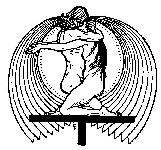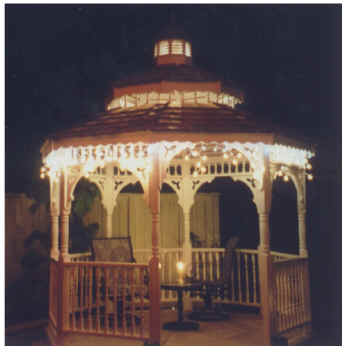Second Honeymoon
by Catherine Decker

The swish of my green taffeta ballgown
is echoed outside -
The sounds of a hundred ballgowns
on water sprites waltzing in the fountain.
Six thousand years of poets have sought
to describe the stars in the night sky
and failed.
Who am I to whisper into time’s
ear the view of my eyes?
In the gazebo, my love’s lips against mine,
the willows wave across the mill pond;
There is magic in the night.
The internet gives a new opportunity for poetic self-publication. Gone are the days of slim volumes, privately and expensively printed, and circulated in numbered copies to a small audience, willing or unwilling, of the poet’s friends. All you need is a website, a very modest amount of web space, and your Complete Works can soon be made available worldwide. An opportunity therefore for the poetry writer, but what about the poetry reader? Have you ever tried surfing the web, looking, not for archives of poetry already in printed form, or for academic studies of well-established poets, but for new poems, published nowhere else? If you have, you may have found it a rather depressing activity, working your way through the seemingly endless doggerel. Nevertheless, there are good things waiting to be found. Like some exhausted prospector in the Klondyke, you hit gold just at the moment when you are least expecting it, and were about to give up and make the long treck home. Here is one such nugget, the original of which can be found at
http://locutus.ucr.edu/~cathy/poems/2ndh.htmlStructure and meaning fuse perfectly in this short poem. The onomatopoeic swish immediately introduces the sound-sense connection that runs through the first stanza. The ballgown of the first line is a visual and tactile fashion item, but then the assonance of sounds with ballgowns in the third line makes us think of its auditory qualities, as well as perhaps the noise in the ballroom as a whole. Then the scansion in
wáter sprites wáltzing in the ...picks up the 1-2-3 waltz rhythm of the ball. These Naiads have left their classical world behind and learnt the dances of the 19th century. The waltz rhythm of the fourth line contrasts with the ragged rhythm of the first, but on closer inspection we now see that the first line can be read as a line of blank verse.
The first line of the second stanza avoids being what we might have expected,
Six thousand years of poetry have sought- which would have been an all too regular line of blank verse. Putting poets in place of the more conventional abstract noun concentrates attention on the poetry-writing process going on behind the poem we are reading. At the centre of the poem are the traditional themes of the poet immortalising, and the poet failing to describe what he or she wants to describe - like Shakespeare in the sonnets. And this very confession of failure itself constitutes a successful description of the stars. The lines succeed therefore, by admitting failure.
Particularly effective are the two lines
Who am I to whisper into time’swhere a metaphor of poetic survival, the poet speaking her experience into the ear of a personified Time, also suggests the lovers’ embrace which comes at the beginning the third stanza.
ear the view of my eyes?
The short line
and failedof the second stanza, matches the short line
is echoed outsideof the first stanza. The first short line gives a pause, after which you can, as it were, hear the echo. The second short line ‘echoes’ the first short line, but the silence that follows it now stands for the silence of the poets who cannot describe the stars. Keats used a similar device in one of his sonnets,
These, these will give the world another heart- where the truncated pentameter suggests the pause as poet and reader stop to listen.
And other pulses. Hear ye not the hum
Of mighty workings? -
Listen awhile ye nations, and be dumb.
The last stanza is not exactly a haiku, but is clearly meant to remind us of one. From its threefold structure we are taken back to the threefold structure of the poem as a whole, and we look at the mood connections and changes that run through it: the sensory, the intellectual, the loving. Immediate sensations contrast with the traditions of poetry, but the sensations, like the traditions, repeat, both down the ages and for the individual. Hence the title, Second Honeymoon, to tell us that there was a first honeymoon that came before it.

Back to the index